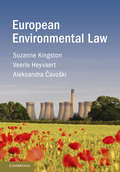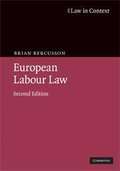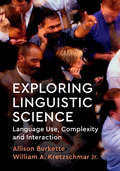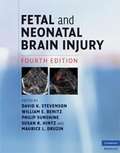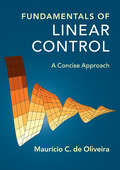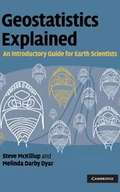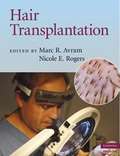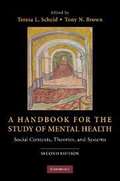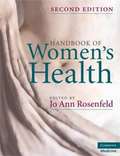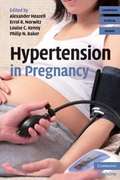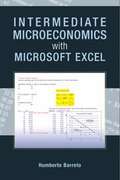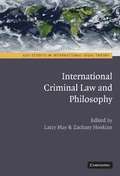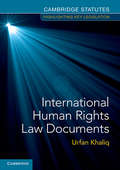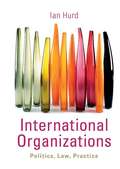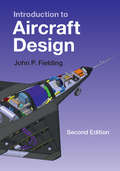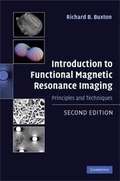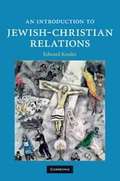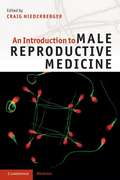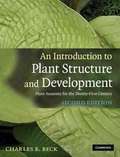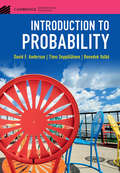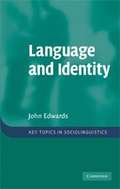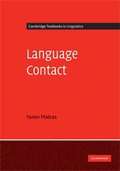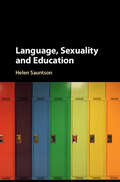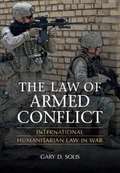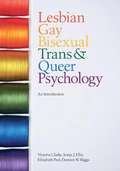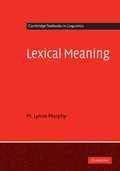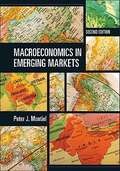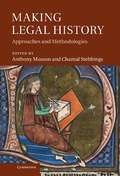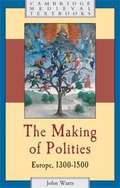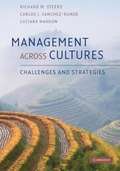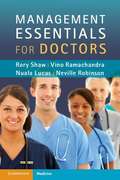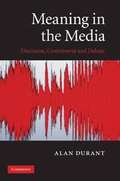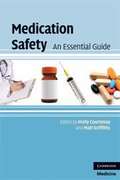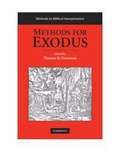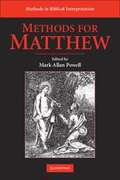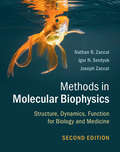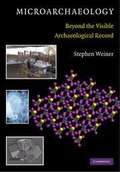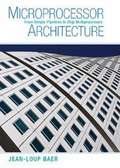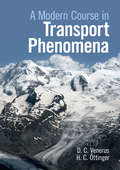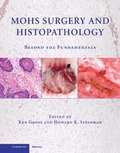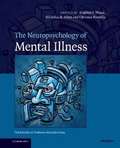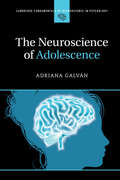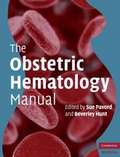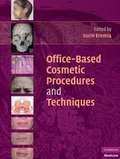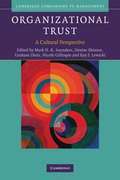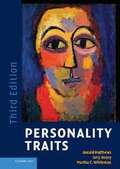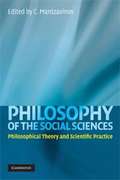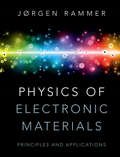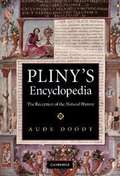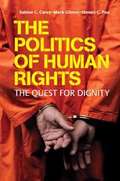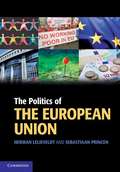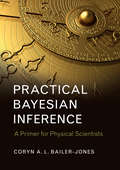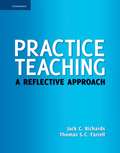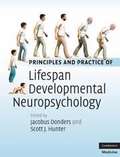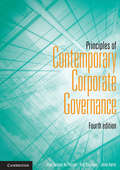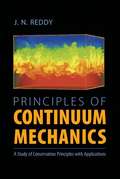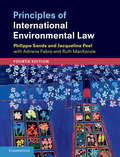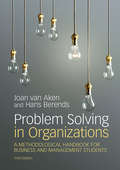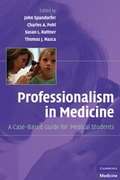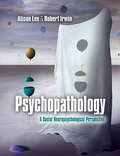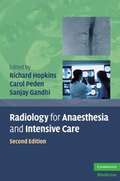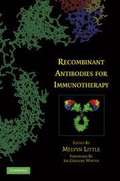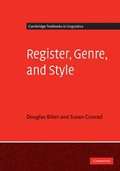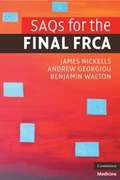- Table View
- List View
EU Treaties and Legislation
by Robert SchützeThis collection of the essential primary and secondary law of the European Union quickly and effectively guides students to the material they need during exams and lectures. Part I contains the European Union's primary law in consolidated form. Part II offers a selection of the essential pieces of European Union legislation in five core areas of particular importance to undergraduate and graduate studies: institutions, the internal market, competition, social policy and consumer protection. Colour-coded for easy navigation, all legislative acts are presented in their 'Lisbonised' and consolidated form. Student support is provided in two forewords that guide readers through the steps of finding, reading and understanding EU law, and a sophisticated table of equivalences that illustrates the evolution of the treaties from the Rome Treaty to the present day. An appendix includes extracts of the two central UK Acts that pertain to the European Union. Judicious selection of legislation. Clear, sensible structure and organisation. Complementary EU law textbook.
European Constitutional Law
by Robert SchützeWritten with exceptional clarity and fully updated from the first edition, the second edition of European Constitutional Law constitutes a classic textbook for students and practitioners of European law. Using a clear structural framework, the text guides readers through all of the core constitutional topics of EU law. Extracts from classic case law are complemented with extensive and critical discussion of the theoretical and practical aspects of the European Union and its law, leading students to a deep understanding of the subject. Chapters are enriched with more than fifty colour figures and tables, which clarify complex topics and illustrate relationships and processes. New suggestions for further reading direct students to significant pieces of academic literature for deeper self-study, and a companion website with full 'Lisbonised' versions of the cases cited in the text completes the learning package. Integrates numerous case extracts while maintaining a continuous, single-authored narrative, and combines straightforward explanations with scholarly analysis, highlighting theoretical approaches and key academic debates. A new two-colour design emphasises case extracts and enhances figures and tables, and two new appendices provide guidance on finding, reading and understanding EU law. A new companion website includes full 'Lisbonised' versions of the cases cited in the text, organised by chapter for quick and easy access.
European Environmental Law (Routledge Research In European Union Law Ser.)
by Suzanne Kingston Veerle Heyvaert Aleksandra ČavoškiEU Environmental Law is a critical, comprehensive and engaging account of the essential and emerging issues in European environmental law and regulation today. Suitable for advanced undergraduate and postgraduate students, the book delivers a thematic and contextual treatment of the subject for those taking courses in environmental law, environmental studies, regulation and public policy, and government and international relations. Placing the key issues in context, EU Environmental Law takes an interdisciplinary and thematic approach to help students to better understand the implementation and enforcement of environmental law and policy across Europe. It offers an accessible overview, and links theory with practical applications that will allow students to contextualise the outcomes of legal rules and their impact on public and private behaviours. It provides a definitive account of the subject, examining traditional topics such as nature conservation law, waste law and water law, alongside increasingly important fields such as the law of climate change, environmental human rights law, and regulation of GMOs and nanotechnology.
European Labour Law
by Brian BercussonEuropean Labour Law explores how individual European national legal systems, in symbiosis with the European Union, produce a transnational labour law system that is distinct and genuinely European in character. Professor Brian Bercusson describes the evolution of this system, its national, transnational and global contexts and its institutional and substantive structures. The collective industrial-relations dimension of employment is examined, and the labour law of the EU as manifested in, for example, European works councils is analysed. Important subjects which have traditionally received little attention in some European labour law systems are covered, for example, the fragmentation of the workforce into atypical forms of employment. Attention is also given to the enforcement of European labour law through administrative or judicial mechanisms and the European social dialogue at intersectoral and sectoral levels. This new edition has been extensively updated, as the EU's influence on this area of social policy continues to grow.
Exploring Linguistic Science: Language Use, Complexity, and Interaction
by Allison Burkette William KretzschmarExploring Linguistic Science introduces students to the basic principles of complexity theory and then applies these principles to the scientific study of language.<P><P> It demonstrates how, at every level of linguistic study, we find evidence of language as a complex system. Designed for undergraduate courses in language and linguistics, this essential textbook brings cutting-edge concepts to bear on the traditional components of general introductions to the study of language, such as phonetics, morphology and grammar. The authors maintain a narrative thread throughout the book of 'interaction and emergence', both of which are key terms from the study of complex systems, a new science currently useful in physics, genetics, evolutionary biology, and economics, but also a perfect fit for the humanities. The application of complexity to language highlights the fact that language is an ever-changing, ever-varied product of human behavior.
Fast Multipole Boundary Element Method
by Yijun LiuThe fast multipole method is one of the most important algorithms in computing developed in the 20th century. Along with the fast multipole method, the boundary element method (BEM) has also emerged, as a powerful method for modeling large-scale problems. BEM models with millions of unknowns on the boundary can now be solved on desktop computers using the fast multipole BEM. This is the first book on the fast multipole BEM, which brings together the classical theories in BEM formulations and the recent development of the fast multipole method. Two- and three-dimensional potential, elastostatic, Stokes flow, and acoustic wave problems are covered, supplemented with exercise problems and computer source codes. Applications in modeling nanocomposite materials, bio-materials, fuel cells, acoustic waves, and image-based simulations are demonstrated to show the potential of the fast multipole BEM. This book will help students, researchers, and engineers to learn the BEM and fast multipole method from a single source.
Fetal and Neonatal Brain Injury
by David K. Stevenson William E. Benitz Philip Sunshine Susan R. Hintz Maurice L. DruzinImprovements in the detection of fetal and neonatal brain injuries, advances in our understanding of the pathophysiology, cellular and molecular bases of encephalopathy, and new treatment options have all combined to produce significant changes in the management of neonatal brain disorders in the past few years. This new edition of Fetal and Neonatal Brain Injury brings the reader fully up to date with all advances in clinical management and outcome assessment. New material includes pregnancy-induced hypertension, HELLP syndrome and chronic hypertension, complications of multiple gestation, neurogenic disorders of the brain, neonatal stroke and much more. An expanded, highly illustrated chapter on structural and functional imaging of the fetal and neonatal brain is also included. An outstanding international team of highly experienced neonatologists and maternal-fetal medicine clinicians have produced a practical, authoritative clinical text that gives clear management advice to all clinicians involved in the treatment of these patients.
Fetal Medicine (Royal College of Obstetricians and Gynaecologists Advanced Skills)
by Bidyut Kumar Zarko AlfirevicBased on the curriculum of the Royal College of Obstetricians and Gynaecologists' Advanced Training Skills Module in Fetal Medicine, this book provides a comprehensive knowledge base for all doctors practising in obstetrics and maternal-fetal medicine worldwide. It acts as a reference source for the many changing concepts in fetal medicine and is well-illustrated with images of normal and abnormal findings in pregnancy that will facilitate proper understanding of normal and pathological fetal development. Coverage includes embryology, fetal physiology; fetal anomalies; fetal diseases; prescribing and teratogenesis in pregnancy; termination of pregnancy; fetal growth and wellbeing; multiple pregnancy; the placenta and amniotic fluid; and diagnostic and therapeutic invasive procedures. Readers will benefit from the theoretical knowledge and vast clinical experience of the internationally renowned authorship. Overall this book will prepare you for dealing with congenital abnormalities detected during pregnancy, including the organization and supervision of screening programmes for structural and chromosomal anomalies. Covers the curriculum for the RCOG's Advanced Training Skills Module (ATSM) in fetal medicine Also of interest to all trainees and consultants looking to develop and update their skills in fetal medicine Chapter authors are all recognized experts in their fields
A First Course in Quantitative Finance
by Thomas MazzoniThis new and exciting book offers a fresh approach to quantitative finance and utilizes novel new features, including stereoscopic images which permit 3D visualization of complex subjects without the need for additional tools. Offering an integrated approach to the subject, A First Course in Quantitative Finance introduces students to the architecture of complete financial markets before exploring the concepts and models of modern portfolio theory, derivative pricing, and fixed-income products in both complete and incomplete market settings. Subjects are organized throughout in a way that encourages a gradual and parallel learning process of both the economic concepts and their mathematical descriptions, framed by additional perspectives from classical utility theory, financial economics, and behavioral finance. Suitable for postgraduate students studying courses in quantitative finance, financial engineering, and financial econometrics as part of an economics, finance, econometric, or mathematics program, this book contains all necessary theoretical and mathematical concepts and numerical methods, as well as the necessary programming code for porting algorithms onto a computer.
Forest Health: An Integrated Perspective
by John D. Castello Stephen A. TealeForest Health: An Integrated Perspective is the first book to define an ecologically rational, conceptual framework that unifies and integrates the many sub-disciplines that comprise the science of forest health and protection. This new global approach applies to boreal, temperate, tropical, natural, managed, even-aged, uneven-aged and urban forests, as well as plantations. Readers of the text can use real datasets to assess the sustainability of four forests around the world. Datasets for the case studies are at www.cambridge.org/9780521766692, and the text provides stepwise instructions for performing the calculations in Microsoft Excel. Readers can follow along as the editors perform the same calculations and interpret the results. Elevating forest health from a fuzzy concept to an ecologically sound paradigm, this is essential reading for undergraduate and graduate students and professionals interested in forest health, protection, entomology, pathology and ecology.
Fundamentals of Linear Control: A Concise Approach
by Maurício C. De OliveiraTaking a different approach from standard thousand-page reference-style control textbooks, Fundamentals of Linear Control provides a concise yet comprehensive introduction to the analysis and design of feedback control systems in fewer than 400 pages. The text focuses on classical methods for dynamic linear systems in the frequency domain. The treatment is, however, modern and the reader is kept aware of contemporary tools and techniques, such as state space methods and robust and nonlinear control. Featuring fully worked design examples, richly illustrated chapters, and an extensive set of homework problems and examples spanning across the text for gradual challenge and perspective, this textbook is an excellent choice for senior-level courses in systems and control or as a complementary reference in introductory graduate level courses. The text is designed to appeal to a broad audience of engineers and scientists interested in learning the main ideas behind feedback control theory. Provides a comprehensive yet concise introduction to the analysis and design of feedback control systems, with the required content presented in less than 400 pages, versus the typical thousand-page standard control textbooks presently available. Features fully worked examples and richly illustrated chapters, complemented by an extensive set of homework problems with activities in MATLAB®, allowing students to gain valuable hands-on experience by solving select problems which span across chapters. Offers a complete teaching package on the companion website that include all MATLAB® scripts to generate all figures and tables in the book and a complete solutions manual.
Geometric and Topological Inference (Cambridge Texts in Applied Mathematics #57)
by Jean-Daniel Boissonnat Frédéric Chazal Mariette YvinecGeometric and topological inference deals with the retrieval of information about a geometric object using only a finite set of possibly noisy sample points. It has connections to manifold learning and provides the mathematical and algorithmic foundations of the rapidly evolving field of topological data analysis. Building on a rigorous treatment of simplicial complexes and distance functions, this self-contained book covers key aspects of the field, from data representation and combinatorial questions to manifold reconstruction and persistent homology. It can serve as a textbook for graduate students or researchers in mathematics, computer science and engineering interested in a geometric approach to data science.
Geostatistics Explained
by Steve Mckillup Melinda Darby DyarA reader-friendly introduction to geostatistics for students and researchers struggling with statistics. Using simple, clear explanations for introductory and advanced material, it demystifies complex concepts and makes formulas and statistical tests easy to apply. Beginning with a critical evaluation of experimental and sampling design, the book moves on to explain essential concepts of probability, statistical significance and type 1 and type 2 error. An accessible graphical explanation of analysis of variance (ANOVA) leads onto advanced ANOVA designs, correlation and regression, and non-parametric tests including chi-square. Finally, it introduces the essentials of multivariate techniques, multi-dimensional scaling and cluster analysis, analysis of sequences and concepts of spatial analysis. Illustrated with wide-ranging examples from topics across the Earth and environmental sciences, Geostatistics Explained can be used for undergraduate courses or for self-study and reference. Worked examples at the end of each chapter reinforce a clear understanding of the statistical tests and their applications.
Graphene
by Mikhail I. KatsnelsonGraphene is the thinnest known material, a sheet of carbon atoms arranged in hexagonal cells a single atom thick, and yet stronger than diamond. It has potentially significant applications in nanotechnology, 'beyond-silicon' electronics, solid-state realization of high-energy phenomena and as a prototype membrane which could revolutionise soft matter and 2D physics. In this book, leading graphene research theorist Mikhail Katsnelson presents the basic concepts of graphene physics. Topics covered include Berry phase, topologically protected zero modes, Klein tunneling, vacuum reconstruction near supercritical charges, and deformation-induced gauge fields. The book also introduces the theory of flexible membranes relevant to graphene physics and discusses electronic transport, optical properties, magnetism and spintronics. Standard undergraduate-level knowledge of quantum and statistical physics and solid state theory is assumed. This is an important textbook for graduate students in nanoscience and nanotechnology and an excellent introduction for physicists and materials science researchers working in related areas.
Hair Transplantation
by Marc R. Avram Nicole E. RogersHair Transplantation in Cosmetic Dermatology is a fully illustrated reference book that provides a state-of-the-art overview to all aspects of hair transplantation. Using a combination of written text, color photographs, and tables, eleven leading physicians and practitioners in the field discuss the latest surgical procedures to restore a natural-looking frame of hair to the face. This volume is an indispensable reference for dermatologists, practitioners, and residents, providing an extensive coverage of the latest procedures and instruments in hair restoration surgery, techniques for follicular unit extraction, Cicatricial alopecia, and eyelash transplantation.
A Handbook for the Study of Mental Health (2nd edition)
by Teresa L. Scheid Tony N. BrownThe 2nd edition of A Handbook for the Study of Mental Health: Contexts, Theories, and Systems provides a comprehensive review of the sociology of mental health, with chapters written by leading scholars and researchers. The volume presents an overview of historical, social, and institutional frameworks for understanding mental health and illness. Part I examines social factors that shape psychiatric diagnosis and the measurement of mental health and illness, the theories that explain the definition and treatment of mental disorders, and cultural variability in mental health. Part II investigates effects of social context on mental health and illness. Individual chapters consider the role of social statuses including class, gender, race, and age. Several chapters focus on the critical role played by stress, marriage, work, and social support, with a concluding chapter focusing on terrorism. Part III focuses on the organization, delivery, and evaluation of mental health services, including a discussion of the criminalization of mental illness, the mental health challenges posed by HIV, and the importance of stigma in meeting the mental health needs of individuals. A Handbook for the Study of Mental Health is a key research reference source that will be useful to both undergraduates and graduate students studying mental health and illness from any number of disciplines.
Handbook of Psychophysiology (3rd Edition)
by Gary G. Berntson John T. Cacioppo Louis G. TassinaryThe Handbook of Psychophysiology, 3rd Edition is an essential reference for students, researchers, and professionals in the behavioral, cognitive, and biological sciences. Psychophysiological methods, paradigms, and theories offer entry to a biological cosmos that does not stop at skin's edge, and this essential reference is designed as a road map for explorers of this cosmos. The scope and coverage in the Handbook have expanded to include both a context for and coverage of the biological bases of cognitive, affective, social, and developmental processes and behavior. In addition to updated coverage of the traditional areas of psychophysiology, coverage of the brain and central nervous system has been expanded to include functional neuroimaging, event related brain potentials, electrophysiological source dipole localization, lesion methods, and transcranial magnetic stimulation. It also includes a section on cellular and humoral systems with attention to the communication across and interactions among cellular, immunological, endocrinological, and neural processes.
Handbook of Women's Health
by Jo Ann RosenfeldThis practical handbook provides a clear and comprehensive evidence-based guide to the care of women in primary care, intended for general and family practitioners, nurses, physician assistants, and all those who practise primary care of women. It emphasizes preventive and well-woman care throughout the life-cycle of a woman, including sexuality, contraception, medical care in pregnancy, and psychological and important medical concerns. This new edition, revised and updated throughout with several new contributing authors, incorporates the latest evidence and research-findings on a wide range of problems for which women seek medical guidance. There is an expanded section on menstrual problems and menopause-associated conditions, including clear guidance on the use of hormone replacement therapy.
Hyperspectral Imaging Remote Sensing: Physics, Sensors, and Algorithms
by Dimitris G. Manolakis Ronald B. Lockwood Thomas W. CooleyA practical and self-contained guide to the principles, techniques, models and tools of imaging spectroscopy. Bringing together material from essential physics and digital signal processing, it covers key topics such as sensor design and calibration, atmospheric inversion and model techniques, and processing and exploitation algorithms. Readers will learn how to apply the main algorithms to practical problems, how to choose the best algorithm for a particular application, and how to process and interpret hyperspectral imaging data. A wealth of additional materials accompany the book online, including example projects and data for students, and problem solutions and viewgraphs for instructors. This is an essential text for senior undergraduate and graduate students looking to learn the fundamentals of imaging spectroscopy, and an invaluable reference for scientists and engineers working in the field. A self-contained introductory text covering the principles, techniques, and tools of imaging spectroscopy. Can be used in both undergraduate and graduate settings, and also as a reference text for practitioners. Accompanied online by example projects and data for students, and problem solutions and viewgraphs for instructors.
Hypertension in Pregnancy
by Alexander Heazell Errol R. Norwitz Louise C. Kenny Philip N. BakerHypertensive disorders are among the most common medical complications of pregnancy, with an incidence of approximately 6-10%. This spectrum of conditions includes essential hypertension, pre-eclampsia and HELLP syndrome. For patients with pre-existing hypertension, management ideally commences prior to conception, and continues through pregnancy to the postnatal period. This book provides information on the evidence-based management of women with hypertension throughout pregnancy, supported by important background information on the etiology, risk-factors and pathophysiology of these disorders. Illustrated with accompanying algorithms, tables and lists for quick reference on diagnostic criteria, drugs and side-effects, this book will help clinicians rapidly gain access to the information they need to care for these patients. This will to be of interest to all grades of obstetric trainees as well as specialists, obstetric anesthetists and anesthetic trainees, midwives and maternal-fetal physicians.
Informal Logic: A Pragmatic Approach (2nd Edition)
by Douglas WaltonSecond edition of the introductory guidebook to the basic principles of constructing sound arguments and criticising bad ones. Non-technical in approach, it is based on 186 examples, which Douglas Walton, a leading authority in the field of informal logic, discusses and evaluates in clear, illustrative detail. Walton explains how errors, fallacies, and other key failures of argument occur. He shows how correct uses of argument are based on sound strategies for reasoned persuasion and critical responses. This edition takes into account many developments in the field of argumentation study that have occurred since 1989, many created by the author. Drawing on these developments, Walton includes and analyzes 36 new topical examples and also brings in work on argumentation schemes. Ideally suited for use in courses in informal logic and introduction to philosophy, this book will also be valuable to students of pragmatics, rhetoric, and speech communication.
Intermediate Microeconomics With Microsoft Excel
by Humberto BarretoThis unique text uses Microsoft Excel® workbooks to instruct students. In addition to explaining fundamental concepts in microeconomic theory, readers acquire a great deal of sophisticated Excel skills and gain the practical mathematics needed to succeed in advanced courses. In addition to the innovative pedagogical approach, the book features explicitly repeated use of a single central methodology, the economic approach. Students learn how economists think and how to think like an economist. With concrete, numerical examples and novel, engaging applications, interest for readers remains high as live graphs and data respond to manipulation by the user. Finally, clear writing and active learning are features sure to appeal to modern practitioners and their students. The website accompanying the text is found at www.depauw.edu/learn/microexcel.
International Business Strategy
by Alain VerbekeHow can you best extend your knowledge of how multinational enterprises (MNEs) function? What does globalization mean for today's managers? How do students turn the message from academic literature into effective business strategies within an MNE? This practical textbook shows how the key concepts from business strategy literature can be applied to multinational enterprise. MBA and Masters students will gain the practical knowledge and skills needed to succeed as effective managers in multinational companies through a critical study of mainstream strategy models and the analysis of forty-five key journal articles. More than twenty 'half-length' case studies from leading firms including Honda, IKEA and Danone show globalization in practice at the firm level. The book also Identifies seven central themes from the literature for successful global strategies and unifies them into a clear framework that can be applied to real businesses worldwide.
International Criminal Law and Philosophy
by Larry May Zachary HoskinsInternational Criminal Law and Philosophy is the first anthology to bring together legal and philosophical theorists to examine the normative and conceptual foundations of international criminal law. In particular, through these essays the international group of authors addresses questions of state sovereignty; of groups, rather than individuals, as perpetrators and victims of international crimes; of international criminal law and the promotion of human rights and social justice; and of what comes after international criminal prosecutions, namely, punishment and reconciliation. International criminal law is still an emerging field, and as it continues to develop, the elucidation of clear, consistent theoretical groundings for its practices will be crucial. The questions raised and issues addressed by the essays in this volume will aid in this important endeavor.
International Human Rights Law and Practice
by Ilias Bantekas Lutz OetteHuman rights law is a complex but compelling subject that fascinates students but also confuses them. This innovative textbook explores human rights law from a theoretical and practical perspective. Case studies and interviews with specialist practitioners, NGO activists and policy-makers show how theory is applied in real life. The up-to-date coverage includes introductions to important emerging fields such as globalisation, poverty and advocacy. Student learning is supported by questions to stimulate seminar discussion and further reading sections that encourage independent study. The authors' combined expertise, engaging writing style and ability to clarify not simplify ensures that this important new book will become required reading for all students of human rights law.
International Human Rights Law Documents
by Urfan KhaliqThis accessible collection of important international human rights documents is an essential resource for students and researchers of international human rights law. In addition to standard instruments such as the Universal Declaration, the 1966 United Nations Covenants and the European Convention and its Protocols, the volume also features topics and documents such as all core UN human rights treaties and their protocols, key international labour instruments and the obligations of the global financial organisations and multi-national corporations. Taking a broad and historical approach, the collection also incorporates Inter-American, African, Asian and Arab instruments alongside older UN documents and numerous soft law documents. Its approach reflects the diverse nature of international human rights law and the courses which now seek to teach it. This book is also valuable for students of international law, global governance and other courses which discuss the law of international human rights.
International Organizations: Politics, Law, Practice
by Ian HurdThis textbook examines the world's most important international organizations, comparing their political environments, legal powers, and controversies. It examines 10 international organizations in detail: what they do, how and why they do it, and the problems they face.
Introduction to Aircraft Design (Cambridge Aerospace Series)
by Fielding John P.The new edition of this popular textbook provides a modern, accessible introduction to the whole process of aircraft design from requirements to conceptual design, manufacture and in-service issues. Highly illustrated descriptions of the full spectrum of aircraft types, their aerodynamics, structures and systems, allow students to appreciate good and poor design and understand how to improve their own designs. Cost data is considerably updated, many new images have been added and new sections are included on the emerging fields of Uninhabited Aerial Vehicles and environmentally-friendly airlines. Examples from real aircraft projects are presented throughout, demonstrating to students the applications of the theory. Three appendices and a bibliography provide a wealth of information, much not published elsewhere, including simple aerodynamic formulae, an introduction to airworthiness and environmental requirements, aircraft, engine and equipment data, and a case study of the conceptual design of a large airliner. Cost data is considerably updated, many new images have been added, and new sections are included on the emerging fields of uninhabited aerial vehicles and environmentally friendly airlines Three appendices and a bibliography provide a wealth of information and data, much not published elsewhere, providing students and practitioners with the essential information they need to help them do their jobs Examples from real aircraft projects are presented throughout and an appendix includes a case study of the conceptual design of a large airliner, demonstrating to students the applications of the theory
Introduction to Bayesian Econometrics: Second Edition
by Edward GreenbergThis textbook explains the basic ideas of subjective probability and shows how subjective probabilities must obey the usual rules of probability to ensure coherency. It defines the likelihood function, prior distributions and posterior distributions. It explains how posterior distributions are the basis for inference and explores their basic properties. Various methods of specifying prior distributions are considered, with special emphasis on subject-matter considerations and exchange ability. The regression model is examined to show how analytical methods may fail in the derivation of marginal posterior distributions. The remainder of the book is concerned with applications of the theory to important models that are used in economics, political science, biostatistics and other applied fields. New to the second edition is a chapter on semiparametric regression and new sections on the ordinal probit, item response, factor analysis, ARCH-GARCH and stochastic volatility models. The new edition also emphasizes the R programming language.
An Introduction to Category Theory
by H. SimmonsCategory theory provides a general conceptual framework that has proved fruitful in subjects as diverse as geometry, topology, theoretical computer science and foundational mathematics. Here is a friendly, easy-to-read textbook that explains the fundamentals at a level suitable for newcomers to the subject. Beginning postgraduate mathematicians will find this book an excellent introduction to all of the basics of category theory. It gives the basic definitions; goes through the various associated gadgetry, such as functors, natural transformations, limits and colimits; and then explains adjunctions. The material is slowly developed using many examples and illustrations to illuminate the concepts explained. Over 200 exercises, with solutions available online, help the reader to access the subject and make the book ideal for self-study. It can also be used as a recommended text for a taught introductory course.
Introduction to Cosmology
by Barbara RydenThis second edition of Introduction to Cosmology is an exciting update of an award-winning textbook. It is aimed primarily at advanced undergraduate students in physics and astronomy, but is also useful as a supplementary text at higher levels. It explains modern cosmological concepts, such as dark energy, in the context of the Big Bang theory. Its clear, lucid writing style, with a wealth of useful everyday analogies, makes it exceptionally engaging. Emphasis is placed on the links between theoretical concepts of cosmology and the observable properties of the universe, building deeper physical insights in the reader. The second edition includes recent observational results, fuller descriptions of special and general relativity, expanded discussions of dark energy, and a new chapter on baryonic matter that makes up stars and galaxies. It is an ideal textbook for the era of precision cosmology in the accelerating universe. Written in an engaging style, using clear explanations and analogies to help students connect cosmology to everyday life Fits well to introductory cosmology courses, without requiring advanced mathematics or any prior study of astronomy Includes creative end-of-chapter problems that have been class-tested on students, with an instructor's manual featuring solutions available via www.cambridge.org/cosmology
An Introduction to European Law
by Robert SchützeThought-provoking and accessible in approach, this book offers a classic introduction to European law. Taking a clear structural framework, it guides the student through the subject's core elements from its creation and enforcement to the workings of the internal market. A flowing writing style combines with the use of illustrations and diagrams throughout the text to ensure the student understands even the most complex of concepts. This succinct and enlightening overview is required reading for all students of European law. Clearly sets out the key principles and central topics taught on EU law courses. Succinct overview which also indicates key debates and controversies in the field. Numerous illustrations reinforce key concepts to aid understanding.
Introduction to Functional Magnetic Resonance Imaging
by Richard B. BuxtonFunctional Magnetic Resonance Imaging (fMRI) has become a standard tool for mapping the working brain's activation patterns, both in health and in disease. It is an interdisciplinary field and crosses the borders of neuroscience, psychology, psychiatry, radiology, mathematics, physics and engineering. Developments in techniques, procedures and our understanding of this field are expanding rapidly. In this second edition of Introduction to Functional Magnetic Resonance Imaging, Richard Buxton - a leading authority on fMRI - provides an invaluable guide to how fMRI works, from introducing the basic ideas and principles to the underlying physics and physiology. He covers the relationship between fMRI and other imaging techniques and includes a guide to the statistical analysis of fMRI data. This book will be useful both to the experienced radiographer, and the clinician or researcher with no previous knowledge of the technology.
An Introduction to Jewish-Christian Relations
by Edward KesslerRelations between Christians and Jews over the past two thousand years have been characterised to a great extent by mutual distrust and by Christian discrimination and violence against Jews. In recent decades, however, a new spirit of dialogue has been emerging, beginning with an awakening among Christians of the Jewish origins of Christianity, and encouraging scholars of both traditions to work together. An Introduction to Jewish-Christian Relations sheds fresh light on this ongoing interfaith encounter, exploring key writings and themes in Jewish-Christian history, from the Jewish context of the New Testament to major events of modern times, including the rise of ecumenism, the horrors of the Holocaust, and the creation of the state of Israel. This accessible theological and historical study also touches on numerous related areas such as Jewish and interfaith studies, philosophy, sociology, cultural studies, international relations and the political sciences.
An Introduction to Male Reproductive Medicine
by Craig NiederbergerAn Introduction to Male Reproductive Medicine is written specifically for readers seeking entry into this fast-moving, complex specialty with a solid understanding of the subject. The first chapters cover the anatomy and physiology, clinical evaluation, surgery, medicine, genetics and laboratory testing involved in the current evaluation and treatment of the infertile male, and the final chapter describes the interaction of the field with female reproductive medicine. Throughout the book, references are directly made to the fourth edition of the major text in the specialty, Infertility in the Male, edited by Larry Lipshultz, Stuart Howards and Craig Niederberger, allowing readers to expand their understanding of specific areas where desired. Each chapter is written by a well-renowned expert in an easy to follow, informal style, making the text ideal for students, residents and general physicians who are seeking to increase their general knowledge of the field.
An Introduction to Partial Differential Equations
by Yehuda Pinchover Jacob RubinsteinA complete introduction to partial differential equations. A textbook aimed at students of mathematics, physics and engineering.
An Introduction to Plant Structure and Development
by Charles B. BeckA plant anatomy textbook unlike any other on the market today. Carol A. Peterson described the first edition as 'the best book on the subject of plant anatomy since the texts of Esau'. Traditional plant anatomy texts include primarily descriptive aspects of structure, this book not only provides a comprehensive coverage of plant structure, but also introduces aspects of the mechanisms of development, especially the genetic and hormonal controls, and the roles of plasmodesmata and the cytoskeleton. The evolution of plant structure and the relationship between structure and function are also discussed throughout. Includes extensive bibliographies at the end of each chapter. It provides students with an introduction to many of the exciting, contemporary areas at the forefront of research in the development of plant structure and prepares them for future roles in teaching and research in plant anatomy.
Introduction to Probability (Cambridge Mathematical Textbooks)
by David F. Anderson Timo Seppäläinen Benedek ValkóThis classroom-tested textbook is an introduction to probability theory, with the right balance between mathematical precision, probabilistic intuition, and concrete applications. Introduction to Probability covers the material precisely, while avoiding excessive technical details. After introducing the basic vocabulary of randomness, including events, probabilities, and random variables, the text offers the reader a first glimpse of the major theorems of the subject: the law of large numbers and the central limit theorem. The important probability distributions are introduced organically as they arise from applications. The discrete and continuous sides of probability are treated together to emphasize their similarities. Intended for students with a calculus background, the text teaches not only the nuts and bolts of probability theory and how to solve specific problems, but also why the methods of solution work. Presented in full color and written in an accessible way, the text provides a comprehensive and well-balanced introduction to probability. Pedagogical features include numerous examples to illustrate concepts and theory, over 600 exercises of varying levels, and separate 'Finer Points' sections for technical details. Instructor's manual available online with detailed solutions to selected problems and further guidance for using the book in a course.
Jurisprudence
by Suri RatnapalaJurisprudence is about the nature of law and justice. It embraces studies and theories from a range of disciplines such as history, sociology, political science, philosophy, psychology and even economics. Why do people obey the law? How does law serve society? What is law's relation to morality? What is the nature of rights? This book introduces and critically discusses the major traditions of jurisprudence. Written in a lucid and accessible style, Suri Ratnapala considers a wide range of views, bringing conceptual clarity to the debates at hand. From Plato and Aristotle to the medieval scholastics, from Enlightenment thinkers to postmodernists and economic analysts of law, this important volume examines the great philosophical debates and gives insight into the central questions concerning law and justice.
Language and Identity: An Introduction
by John EdwardsThe language we use forms an important part of our sense of who we are - of our identity. This book outlines the relationship between our identity as members of groups - ethnic, national, religious and gender - and the language varieties important to each group. What is a language? What is a dialect? Are there such things as language 'rights'? Must every national group have its own unique language? How have languages, large and small, been used to spread religious ideas? Why have particular religious and linguistic 'markers' been so central, singly or in combination, to the ways in which we think about ourselves and others? Using a rich variety of examples, the book highlights the linkages among languages, dialects and identities, with special attention given to religious, ethnic and national allegiances.
Language Contact: The History, Structure and Sociology of a Language
by Yaron MatrasMost societies in today's world are multilingual. 'Language contact' occurs when speakers of different languages interact and their languages influence each other. This book is an introduction to the subject, covering individual and societal multilingualism, the acquisition of two or more languages from birth, second language acquisition in adulthood, language change, linguistic typology, language processing and the structure of the language faculty. It explains the effects of multilingualism on society and language policy, as well as the consequences that long-term bilingualism within communities can have for the structure of languages. Drawing on the author's own first-hand observations of child and adult bilingualism, the book provides a clear analysis of such phenomena as language convergence, grammatical borrowing, and mixed languages.
Language, Sexuality and Education
by Helen SauntsonPresenting a range of data obtained from secondary schools in the UK and US, this path-breaking book explores the role played by language in constructing sexual identities. Analysing the often complex ways in which homophobia, heterosexism and heteronormativity are enacted within school contexts, it shows that by analysing language, we can discover much about how educators and students experience sexual diversity in their schools, how sexual identities are constructed through language, and how different statuses are ascribed to different sexual identities.
The Law of Armed Conflict: International Humanitarian Law in War
by Gary D. SolisThe Law of Armed Conflict: International Humanitarian Law in War introduces law students and undergraduates to the law of war in an age of terrorism. What law of armed conflict/international humanitarian law applies to particular armed conflicts? Does that law apply to terrorists as well? What is the status of participants in an armed conflict? What constitutes a war crime? What is a lawful target and how are targeting decisions made? What are rules of engagement? What weapons are lawful and unlawful, and why? This text takes the reader through these essential questions of the law of armed conflict and international humanitarian law to an awareness of finer points of battlefield law. The U. S. -weighted text incorporates lessons from many nations and includes hundreds of cases from jurisdictions worldwide.
Lesbian, Gay, Bisexual, Trans and Queer Psychology
by Victoria Clarke Sonja J. Ellis Elizabeth Peel Damien W. RiggsThis exciting and engaging textbook introduces students to the psychology of lesbian, gay, bisexual, trans and queer lives and experiences. It covers a broad range of topics including diversity, prejudice, health, relationships, parenting and lifespan experiences from youth to old age. The book includes 'key researcher' boxes, which outline the contributions of significant individuals and their motivations for conducting their research in their own words. Key issues and debates are discussed throughout the book, and questions for discussion and classroom exercises help students reflect critically and apply their learning. There are extensive links to further resources and information, as well as 'gaps and absences' sections, indicating major limitations of research in a particular area. This is the essential textbook for anyone studying LGBTQ Psychology, Psychology of Sexuality or related courses. It is also a useful supplement to courses on Gender and Developmental Psychology.
Lexical Meaning
by M. Lynne Murphy"The ideal introduction for students of semantics, Lexical Meaning fills the gap left by more general semantics textbooks, providing the teacher and the student with insights into word meaning beyond the traditional overviews of lexical relations. The book explores the relationship between word meanings and syntax and semantics more generally. It provides a balanced overview of the main theoretical approaches, along with a lucid explanation of their relative strengths and weaknesses. After covering the main topics in lexical meaning, such as polysemy and sense relations, the textbook surveys the types of meanings represented by different word classes. It explains abstract concepts in clear language, using a wide range of examples, and includes linguistic puzzles in each chapter to encourage the student to practise using the concepts. 'Adopt-a-Word' exercises give students the chance to research a particular word, building a portfolio of specialist work on a single word"--
The Life of the Heroin User: Typical Beginnings, Trajectories and Outcomes
by Shane DarkeHeroin is a worldwide scourge and a seemingly intractable one. The Life of the Heroin User: Typical Beginnings, Trajectories and Outcomes is the first book to apply a biographical approach to the lifecycle of the heroin user from birth until death. Chapters address each stage of the user's life, including childhood, routes to use, the development of dependence, problems arising from addiction, death and options for treatment and prevention. Drawing on over two decades of experience in the field of opium research, Shane Darke examines major theoretical approaches to the development of opiate dependence and the efficacy of treatment options for opiate dependence. Key points are presented at the end of each chapter. The most detailed review available of what is likely to happen to the dependent heroin user, this is an important book for clinicians, researchers and students in the fields of drug and alcohol studies and public health.
Linguistic Fieldwork: A Student Guide
by Jeanette Sakel Daniel L. EverettA handy beginner's guide, this textbook introduces the various stages of linguistic fieldwork, from the preparation of the work to the presentation of the results. Drawing on over forty years of fieldwork experience between them, in over two dozen languages, the authors pack the book with examples and anecdotes from their experiences and include practical exercises for students to test what they have learned. Independent of any particular perspective, the methods can be applied to a wide range of fieldwork settings, for projects with very different theoretical backgrounds and without the need to travel too far. The book covers 'traditional fieldwork' such as language description and documentation, as well as less typical methods, including language contact and quantitative studies with experiments or questionnaires.
Macroeconomics in Emerging Markets
by Peter J. MontielThe macroeconomic experience of emerging and developing economies has tended to be quite different from that of industrial countries. Compared to industrial countries, emerging and developing economies have tended to be much more unstable, with more severe boom/bust cycles, episodes of high inflation and a variety of financial crises. This textbook describes how the standard macroeconomic models that are used in industrial countries can be modified to help understand this experience and how institutional and policy reforms in emerging and developing economies may affect their future macroeconomic performance. This second edition differs from the first in offering: extensive new material on themes such as fiscal institutions, inflation targeting, emergent market crises, and the Great Recession; numerous application boxes; end-of-chapter questions; references for each chapter; more diagrams, less taxonomy, and a more reader-friendly narrative; and enhanced integration of all parts of the work.
Making Legal History
by Chantal Stebbings Anthony MussonDrawing together leading legal historians from a range of jurisdictions and cultures, this collection of essays addresses the fundamental methodological underpinning of legal history research. Via a broad chronological span and a wide range of topics, the contributors explore the approaches, methods and sources that together form the basis of their research and shed light on the complexities of researching into the history of the law. By exploring the challenges posed by visual, unwritten and quasi-legal sources, the difficulties posed by traditional archival material and the novelty of exploring the development of legal culture and comparative perspectives, the book reveals the richness and dynamism of legal history research.
The Making of Polities: Europe, 1300-1500
by John WattsThis major survey of political life in late medieval Europe - the first for more than thirty years - provides an entirely new framework for understanding the developments that shaped this turbulent period. Rather than emphasising crisis, decline, disorder or the birth of the modern state, this account centres on the mixed results of political and governmental growth across the continent. The age of the Hundred Years War, schism and revolt was also a time of rapid growth in jurisdiction, taxation and representation, of spreading literacy and evolving political technique. This mixture of state formation and political convulsion lay at the heart of the 'making of polities'. Offering a full introduction to political events and processes from the fourteenth century to the sixteenth, this book combines a broad, comparative account with discussion of individual regions and states, including eastern and northern Europe alongside the more familiar west and south.
Management Across Cultures: Challenges and Strategies
by Richard M. Steers Carlos J. Sanchez-Runde Luciara NardonManagement practices and processes frequently differ across national and regional boundaries. What may be acceptable managerial behaviour in one culture may be counterproductive or even unacceptable in another. As managers increasingly find themselves working across cultures, the need to understand these differences has become increasingly important. This book examines why these differences exist and how global managers can develop strategies and tactics to deal with them. Key features: - Draws on recent research in anthropology, psychology, and management, to explain the cultural and psychological underpinnings that shape managerial attitudes and behaviours - Introduces a learning model to guide in the intellectual and practical development of managers seeking enhanced global expertise - Offers user-friendly conceptual models to guide understanding and exploration of topics - Summarizes and integrates the lessons learned in each chapter in applications-oriented 'Manager's Notebooks' - A companion website featuring course outlines, slides, and case studies is available at www. cambridge. org/management_across_cultures.
Management Essentials for Doctors
by Vino Ramachandra Neville Robinson Rory Shaw Nuala LucasManagement skills and a sound knowledge of the NHS are mandatory for consultant and general practice careers. Management Essentials for Doctors is an invaluable resource for trainee doctors, hospital consultants and general practitioners, as well as a compendium of 'hot topics' for all doctors preparing for medical interviews. Written by doctors, for doctors, the 60 topics provide: * Clear descriptions of NHS structures, functions, policy and procedures * Detailed coverage of core management skills * An in-depth review of professional, governance, safety and quality issues Written in an easy-to-read style, with alphabetically listed themes for quick reference, Management Essentials for Doctors is not only an indispensable guide for busy clinicians, educational leads and medical managers but also a practical resource for interview preparation and career development.
Materiomics: High-throughput Screening of Biomaterial Properties
by Jan De Boer Clemens A. van BlitterswijkThis complete, yet concise, guide introduces you to the rapidly developing field of high throughput screening of biomaterials: materiomics. Bringing together the key concepts and methodologies used to determine biomaterial properties, you will understand the adaptation and application of materomics in areas such as rapid prototyping, lithography and combinatorial chemistry. Each chapter is written by internationally renowned experts, and includes tutorial paragraphs on topics such as biomaterial-banking, imaging, assay development, translational aspects, and informatics. Case studies of state-of-the-art experiments provide illustrative examples, whilst lists of key publications allow you to easily read up on the most relevant background material. Whether you are a professional scientist in industry, a student, or a researcher, this book is not to be missed if you are interested in the latest developments in biomaterials research.
Meaning in the Media
by Alan DurantMeaning in the Media addresses the issue of how we should respond to competing claims about meaning put forward in confrontations between people or organisations in highly charged circumstances such as bitter public controversies and expensive legal disputes. Alan Durant draws attention to the pervasiveness and significance of such meaning-related disputes in the media, investigating how their 'meaning' dimension is best described and explained. Through his analysis of deception, distortion, bias, false advertising, offensiveness and other kinds of communicative behaviour that trigger interpretive disputes, Durant shows that we can understand both meaning and media better if we focus in new ways on moments in discourse when the apparently continuous flow of understanding and agreement breaks down. This lively and contemporary volume will be invaluable to students and teachers of linguistics, media studies, journalism and law.
Medication Safety
by Molly Courtenay Matt GriffithsThe supply and administration of medicines is an area of practice in which a number of healthcare professionals (e.g. nurses, pharmacists and allied health professionals) are involved. Prescribing is a relatively new role which many of these healthcare professionals have adopted. Medication Safety focuses on promoting safety in the delivery of medicines. Chapters explore the various stages in the medication process including safety in prescribing, dispensing and administering drugs. Adverse reactions, parenteral administration, dosage calculations, safety with controlled drugs, and reporting errors and near misses are all addressed in evidence-based contributions from a highly experienced team of contributors. This text is essential reading for all healthcare professionals involved in the delivery of medicines to patients.
Metaphor and Writing: Figurative Thought in the Discourse of Written Communication
by Philip EubanksThis volume explains how metaphors, metonymies, and other figures of thought interact cognitively and rhetorically to tell us what writing is and what it should do. Drawing on interviews with writing professionals and published commentary about writing, it argues that our everyday metaphors and metonymies for writing are part of a figurative rhetoric of writing - a pattern of discourse and thought that includes ways we categorize writers and writing; stories we tell about people who write; conceptual metaphors and metonymies used both to describe and to guide writing; and familiar, yet surprisingly adaptable, conceptual blends used routinely for imagining writing situations. The book will give scholars a fresh understanding of concepts such as 'voice', 'self', 'clarity', 'power', and the most basic figure of all: 'the writer'.
Methods for Exodus
by Thomas B. DozemanMethods for Exodus is a textbook on biblical methodology. The book introduces readers to six distinct methodologies that aid in the interpretation of the book of Exodus: literary and rhetorical, genre, source and redaction, liberation, feminist, and postcolonial criticisms. Describing each methodology, the volume also explores how the different methods relate to and complement one another. Each chapter includes a summary of the hermeneutical presuppositions of a particular method with a summary of the impact of the method on the interpretation of the book of Exodus. In addition, Exodus 1-2 and 19-20 are used to illustrate the application of each method to specific texts. The book is unique in offering a broad methodological discussion with all illustrations centered on the book of Exodus.
Methods for Matthew
by Mark Allan PowellToday's biblical scholars study the Gospel of Matthew with a wide variety of methods that yield diverse and exciting insights. Methods for Matthew offers a primer on six exegetical approaches that have proved to be especially useful and popular. In each case, a prominent scholar describes the principles and procedures of a particular approach and then demonstrates how that approach works in practice, applying it to a well-known text from Matthew's Gospel. As an added bonus, each of the chosen texts is treated to three different interpretations so that the reader can easily compare the results obtained through one approach to those obtained through other approaches. The reader will learn a great deal about two stories from Matthew ("the healing of a centurion's servant" and "the resurrection of Jesus") and the reader will also learn enough about each of these six approaches to understand their function in biblical studies today.
Methods in Molecular Biophysics (2nd Edition): Structure, Dynamics, Function for Biology and Medicine
by Joseph Zaccai Nathan Zaccai Igor SerdyukOur knowledge of biological macromolecules and their interactions is based on the application of physical methods, ranging from classical thermodynamics to recently developed techniques for the detection and manipulation of single molecules. These methods, which include mass spectrometry, hydrodynamics, microscopy, diffraction and crystallography, electron microscopy, molecular dynamics simulations, and nuclear magnetic resonance, are complementary; each has its specific advantages and limitations. <P><P>Organised by method, this textbook provides descriptions and examples of applications for the key physical methods in modern biology. It is an invaluable resource for undergraduate and graduate students of molecular biophysics in science and medical schools, as well as research scientists looking for an introduction to techniques beyond their specialty. As appropriate for this interdisciplinary field, the book includes short asides to explain physics aspects to biologists and biology aspects to physicists.
Microarchaeology: Beyond the Visible Archaeological Record
by Stephen WeinerThe archaeological record is a combination of what is seen by eye, as well as the microscopic record revealed with the help of instrumentation. The information embedded in the microscopic record can significantly add to our understanding of past human behaviour, provided this information has not been altered by the passage of time. Microarchaeology seeks to understand the microscopic record in terms of the type of information embedded in this record, the materials in which this information resides, and the conditions under which a reliable signal can be extracted. This book highlights the concepts needed to extract information from the microscopic record. Intended for all archaeologists and archaeological scientists, it will be of particular interest to students who have some background in the natural sciences as well as archaeology.
Microprocessor Architecture: From Simple Pipelines to Chip Multiprocessors
by Jean-Loup BaerThis book gives a comprehensive description of the architecture of microprocessors from simple in-order short pipeline designs to out-of-order superscalars. It discusses topics such as - the policies and mechanisms needed for out-of-order processing such as register renaming, reservation stations, and reorder buffers - optimizations for high performance such as branch predictors, instruction scheduling, and load-store speculations - design choices and enhancements to tolerate latency in the cache hierarchy of single and multiple processors - state-of-the-art multithreading and multiprocessing emphasizing single chip implementations Topics are presented as conceptual ideas, with metrics to assess the performance impact, if appropriate, and examples of realization. The emphasis is on how things work at a black box and algorithmic level. The author also provides sufficient detail at the register transfer level so that readers can appreciate how design features enhance performance as well as complexity.
A Modern Course in Transport Phenomena
by Hans Christian Öttinger David C. VenerusThis advanced text presents a unique approach to studying transport phenomena. Bringing together concepts from both chemical engineering and physics, it makes extensive use of nonequilibrium thermodynamics, discusses kinetic theory, and sets out the tools needed to describe the physics of interfaces and boundaries. More traditional topics such as diffusive and convective transport of momentum, energy and mass are also covered. <P><P>This is an ideal text for advanced courses in transport phenomena, and for researchers looking to expand their knowledge of the subject. The book also includes: • Novel applications such as complex fluids, transport at interfaces and biological systems, • Approximately 250 exercises with solutions (included separately) designed to enhance understanding and reinforce key concepts, • End-of-chapter summaries. <P> Presents a unique approach to studying transport phenomena.<P> Mathematically rigorous, yet uses an easy-to-follow structure.<P> Includes numerous homework exercises and solutions.
Moffat's Trusts Law: Text and Materials (Law in Context)
by Jonathan Garton Graham Moffat Gerry Bean Rebecca ProbertThis latest edition of Moffat's Trusts Law has been fully revised and updated to cover recent statutory developments and explores the impact of a wealth of new cases including the Supreme Court decisions in Pitt v. Holt (2013), FHR European Ventures v. Cedar Capital Partners (2014) and Williams v. Central Bank of Nigeria (2014). It has been restructured to incorporate a new chapter on the internationalisation of the trust which provides an understanding of the new directions being taken in the areas of trust law and equitable remedies. Supplementary material includes an online chapter on occupational pension schemes. With suggestions for further reading guiding the student to contemporary debates, this leading textbook retains its hallmark combination of a contextualized approach and a commercial focus, and remains the serious student's textbook of choice. The book utilises a range of teaching methods, including identifying key 'points to consider', use of visual aids and discussion questions. Restructured to include a new chapter on internationalisation of the trust and an online chapter on occupational pension schemes. Retains its hallmark combination of a contextualized approach and a commercial focus.
Mohs Surgery And Histopathology: Beyond The Fundamentals
by Ken Gross Howard K. SteinmanMohs surgery is a highly effective treatment for certain cutaneous and oral pharyngeal cancers. The procedure allows for the precise and complete removal of cancers while preserving significant amounts of normal tissue. Through the presentation and orientation of the specimens' complete surgical margin on pathology slides, the location of tumor foci and other relevant findings can be correlated with their locations on the surgical wound. The ability to create perfect slides for histological examination lies at the core of effective Mohs surgery. These procedures have a 99 percent cure rate for certain cancers when implemented correctly. This book describes the methods the dermatologist, pathologist, or technician can use to optimize the Mohs technique and produce the highest-quality slides and highest cure rates possible.
MRCS Revision Guide: Limbs and Spine
by Mazyar Kanani Khaled M. SarrafThis new, up-to-date, concise revision guide for the MRCS Part B examination equips candidates with the essential knowledge and armamentarium required to tackle the exam. Written in a model question-and-answer format to aid the breakdown of information, candidates can practise some of the most common exam questions they can expect to face. Including subdivisions on applied surgical science and critical care, anatomy and surgical pathology, surgical skills and patient safety and a section on clinical examinations of the limbs and spine, this guide will increase candidates' confidence in both exam technique and key concepts. MRCS Revision Guide: Limbs and Spine is a concise, handy pocket book; a 'must have' quick reference guide for busy surgical trainees studying for the MRCS examination.
The Neuropsychology of Mental Illness
by Stephen J. Wood Nicholas B. Allen Christos PantelisIt is widely accepted that most psychiatric disorders are associated with cognitive impairment and that neuropsychological approaches can help unravel the mechanisms underlying brain function and help us develop a better understanding of these disorders. In this book, a panel of the world's leading experts describe the development of neuropsychological approaches to the investigation, description, measurement and management of a wide range of mental illnesses. Part One explains the rationale for examining neuropsychological processes within clinical disorders, leading into Part Two summarizing and critiquing the methodological approaches to study. Part Three covers each of the major psychiatric disorders and provides a summary of the neuropsychological findings for each condition. The final section brings together the perspectives of neuroscientists, psychiatrists and philosophers. Essential reading for all those studying the healthy as well as the disordered brain, The Neuropsychology of Mental Illness will appeal to specialists from the fields of mental health, psychology, clinical neuroscience and philosophy.
The Neuroscience of Adolescence (Cambridge Fundamentals of Neuroscience in Psychology)
by Adriana GalvánAs scientific inquiry and public interest in the adolescent brain grows, so too does the need for an accessible textbook that communicates the growing research on this topic. The Neuroscience of Adolescence is a comprehensive educational tool for developmental cognitive neuroscience students at all levels as it details the varying elements that shape the adolescent brain. Historical notions of adolescence have focused on the significant hormonal changes that occur as one transitions from childhood to adolescence, but new research has revealed a more nuanced picture that helps inform our understanding of how the brain functions across the lifespan. By emphasizing the biological and neurobiological changes that occur during adolescence, this book gives students a holistic understanding of this developmental window and uniquely discusses the policy implications of neuroscience research on the lives of young people today. Provides a clear introduction to adolescent brain development that integrates cognitive neuroscience and adolescent psychology Includes extensive coverage of the methods used to study the adolescent brain, so readers will be better able to comprehend, evaluate and critique research based on those methods Places research in the real-world context of how adolescent neuroscience has informed key public policy issues
The Obstetric Hematology Manual
by Sue Pavord Beverley HuntObstetric hematology is a fast-growing area of medicine covering the diagnosis and management of hematological problems of pregnancy. Comprehensive in approach, The Obstetric Hematology Manual addresses the many hematological conditions that can cause serious problems in pregnancy, delivery and the post-partum period for both mother and baby. Written by a team of international authorities, this text provides up-to-date, evidence-based guidelines on best care, as well as sound advice based on the experience and opinion of experts. Where appropriate, basic principles are discussed to clarify the rationale for management, and systems and procedures for disease prevention are highlighted. Many conditions and cases are discussed, including venous thromboembolism, pre-eclampsia, anemia, thrombocytopenia and inherited disorders. This book will appeal to both trainees and practitioners in obstetrics, obstetric medicine, obstetric anesthesia and hematology. It is also an accessible text for midwives, nurses, and laboratory staff.
Office-based Cosmetic Procedures And Techniques
by Sorin EremiaThis is a multi-authored textbook that is simple, practical, and up-to-date and supported by instructional videos for cosmetic procedures that can be performed in an office setting. The focus of the book is on fillers, neurotoxins, and various laser, broad band light, radio-frequency, and ultrasound devices that are currently being used or about to be released. It also covers suture suspension lifts, chemical peels, and microdermabrasion. There are supporting chapters on various local, topical, nerve-blocking, and sedation anesthetic techniques that are typically used in an office setting. The book's format and contents are a bold departure from many textbooks. In addition to chapters discussing the theory behind the products and chapters reviewing categories of products or devices that provide the reader with an overview and some comparative discussion, there are short sections for each individual popular branded type of product. The book is useful for both experienced practitioners interested in the latest trends around the world and those who are starting out or are simply interested in adding new procedures to a practice that already includes certain cosmetic procedures.
Optical Physics
by A. LipsonAimed at undergraduate and advanced courses on modern optics, it is ideal for scientists and engineers. The book covers the principles of geometrical and physical optics, leading into quantum optics, using mainly Fourier transforms and linear algebra. Chapters are supplemented with advanced topics and up-to-date applications, exposing readers to key research themes, including negative refractive index, surface plasmon resonance, phase retrieval in crystal diffraction and the Hubble telescope, photonic crystals, super-resolved imaging in biology, electromagnetically induced transparency, slow light and superluminal propagation, entangled photons and solar energy collectors. Solutions to the problems, simulation programs, key figures and further discussions of several topics are available at www.cambridge.org/lipson.
Organizational Trust: A Cultural Perspective
by Mark N. K. Saunders Denise Skinner Graham Dietz Nicole Gillespie Roy J. LewickiThe globalized nature of modern organizations presents new and intimidating challenges for effective relationship building. Organizations and their employees are increasingly being asked to manage unfamiliar relationships with unfamiliar parties. These relationships not only involve working across different national cultures, but also dealing with different organizational cultures, different professional cultures and even different internal constituencies. Managing such differences demands trust. This book brings together research findings on organizational trust-building across cultures. Established trust scholars from around the world consider the development and maintenance of trust between, for example, management consultants and their clients, senior international managers from different nationalities, different internal organizational groupings during times of change, international joint ventures, and service suppliers and the local communities they serve. These studies, set in a wide variety of national settings, are an important resource for academics, students and practitioners who wish to know more about the nature of cross-cultural trust-building in organizations.
Oxytocin, Vasopressin, and Related Peptides in the Regulation of Behavior
by Martin Kavaliers Elena Choleris Donald W. PfaffThe mammalian neurohypophyseal peptide hormones oxytocin and vasopressin act to mediate human social behavior - they affect trust and social relationships and have an influence on avoidance responses. Describing the evolutionary roots of the effects that these neuropeptides have on behavior, this book examines remarkable parallel findings in both humans and non-human animals. The chapters are structured around three key issues: the molecular and neurohormonal mechanisms of peptides; phylogenetic considerations of their role in vertebrates; and their related effects on human behavior, social cognition and clinical applications involving psychiatric disorders such as autism. A final chapter summarizes current research perspectives and reflects on the outlook for future developments. Providing a comparative overview and featuring contributions from leading researchers, this is a valuable resource for graduate students, researchers and clinicians in this rapidly developing field.
Personality Traits
by Gerald Matthews Ian J. Deary Martha C. WhitemanNow in its third edition, this dynamic textbook analyses the traits fundamental to human personality: what they are, why they matter, their biological and social foundations, how they play out in human life and their consequences for cognition, stress and physical and mental health. The text also considers the applications of personality assessment in clinical, educational and occupational settings, providing the reader with a detailed understanding of the whole field of personality traits. This edition, now in 2-colour with improved student features, includes the latest research from behavioural genetics, neuroscience, social psychology and cognitive science, assesses the impact of new research techniques like brain imagery, and provides additional content on positive aspects of traits and practical uses of personality assessment. This is an essential textbook for students taking courses in personality and individual differences and also provides researchers and practitioners with a coherent, up-to-date survey of this significant area.
Philosophy of the Social Sciences: Philosophical Theory and Scientific Practice
by C. MantzavinosThis volume is a unique contribution to the philosophy of the social sciences, presenting the results of cutting-edge philosophers' research alongside critical discussions by practicing social scientists. The book is motivated by the view that the philosophy of the social sciences cannot ignore the specific scientific practices according to which social scientific work is being conducted, and that it will be valuable only if it evolves in constant interaction with theoretical developments in the social sciences. With its unique format guaranteeing a genuine discussion between philosophers and social scientists, this thought-provoking volume extends the frontiers of the field. It will appeal to all scholars and students interested in the interplay between philosophy and the social sciences.
Physics of Electronic Materials: Principles and Applications
by Jørgen RammerAdopting a uniquely pedagogical approach, this comprehensive textbook on the quantum mechanics of semiconductor materials and devices focuses on the materials, components and devices themselves whilst incorporating a substantial amount of fundamental physics related to condensed matter theory and quantum mechanics. Written primarily for advanced undergraduate students in physics and engineering, this book can also be used as a supporting text for introductory quantum mechanics courses, and will be of interest to anyone interested in how electronic devices function at a fundamental level. Complete with numerous exercises, and with all the necessary mathematics and physics included in appendices, this book guides the reader seamlessly through the principles of quantum mechanics and the quantum theory of metals and semiconductors, before describing in detail how devices are exploited within electric circuits and in the hardware of computers, for example as amplifiers, switches and transistors. Includes numerous exercises throughout, allowing the reader to observe theoretical concepts put to practical use and to learn about the important technological applications of quantum mechanics. Assumes only basic mathematical skills, and includes the elementary physics needed for understanding the content of the chapters within the appendices. Focuses on the materials, components and devices themselves whilst also incorporating a considerable amount of fundamental physics related to condensed matter theory and quantum mechanics.
Pliny's Encyclopedia
by Aude DoodyThe Elder Pliny's Natural History is one of the largest and most extraordinary works to survive from antiquity. It has often been referred to as an encyclopedia, usually without full awareness of what such a characterisation implies. In this book, Dr Doody examines this concept and its applicability to the work, paying far more attention than ever before to the varying ways in which it has been read during the last two thousand years, especially by Francis Bacon and Denis Diderot. This book makes a major contribution not just to the study of the Elder Pliny but to our understanding of the cultural processes of ordering knowledge widespread in the Roman Empire and to the reception of classical literature and ideas.
The Politics of Human Rights
by Sabine C. Carey Mark Gibney Steven C. PoeHuman rights is an important issue in contemporary politics, and the last few decades have also seen a remarkable increase in research and teaching on the subject. This book introduces students to the study of human rights and aims to build on their interest while simultaneously offering an alternative vision of the subject. Many texts focus on the theoretical and legal issues surrounding human rights. This book adopts a substantially different approach which uses empirical data derived from research on human rights by political scientists to illustrate the occurrence of different types of human rights violations across the world. The authors devote attention to rights as well as to responsibilities, neither of which stops at one country's political borders. They also explore how to deal with repression and the aftermath of human rights violations, making students aware of the prospects for and realities of progress.
The Politics of the European Union
by Herman Lelieveldt Sebastiaan PrincenA new introduction to the European Union which uses the lens of comparative politics. This approach helps students understand the EU through comparisons with domestic politics and links with broader debates in political science. The text is supported by numerous examples, and chapters include briefings, fact files and controversy boxes which highlight important information and controversial issues in EU politics to widen and deepen student understanding. The authors have developed online 'Navigating the EU' exercises that introduce students to useful sources of information on the internet and help them to analyse policy-making in the EU. This textbook is a comprehensive introduction to EU politics and covers history, theory, key institutions and participants, as well as policies and policy-making.
Postgraduate Orthopaedics: Mcqs and Emqs for the Frcs (Tr & Orth)
by Kesavan Sri-RamWhat do you need to do before sitting the written component of the FRCS (Tr and Orth) examination? Practice, practice, practice. Sadly the MCQs and EMQs in the actual examination are not this straightforward. This book will help the orthopaedic surgeon preparing for the written part of the examination to be ready to face the task ahead. The MCQs and EMQs appear in the same format as the examination and cover the syllabus topics. Divided into subspecialty chapters, including trauma and basic science, this book is ideal for use alongside a revision plan. The questions have detailed answers and selected references, arming readers with the knowledge they need to approach the topic correctly. Written by recent, successful examination candidates, this question-and-answer-based revision guide is ideal preparation for the FRCS (Tr and Orth) examination as well as being helpful for other postgraduate orthopaedic exams.
Practical Bayesian Inference: A Primer for Physical Scientists.
by Coryn A. L. Bailer-jonesScience is fundamentally about learning from data, and doing so in the presence of uncertainty. This volume is an introduction to the major concepts of probability and statistics, and the computational tools for analysing and interpreting data. It describes the Bayesian approach, and explains how this can be used to fit and compare models in a range of problems. Topics covered include regression, parameter estimation, model assessment, and Monte Carlo methods, as well as widely used classical methods such as regularization and hypothesis testing. The emphasis throughout is on the principles, the unifying probabilistic approach, and showing how the methods can be implemented in practice. R code (with explanations) is included and is available online, so readers can reproduce the plots and results for themselves. Aimed primarily at undergraduate and graduate students, these techniques can be applied to a wide range of data analysis problems beyond the scope of this work. Written in an informal yet precise style, suitable for a wide audience from a range of backgrounds in the physical sciences Promotes the Bayesian approach as a general framework for solving problems, but also makes comparison with frequentist methods Describes how methods can be applied in practice to the readers' own problems, so it is not simply a recipe book The R code from the book is available freely online, allowing readers to see how the theory is actually implemented and reproduce the plots and results in the book
Practical Gynaecological Ultrasound
by Jane BatesDevoted solely to gynecological ultrasound, this book covers normal anatomy and physiology as well as pathological processes. With excellent diagrams and halftones it illustrates the key technical and diagnostic steps needed by both the trainee and established radiographer, radiologist and gynecologist, providing clear guidance on the optimum management of patients undergoing gynecological investigation by ultrasound. Key topics include: normal anatomy and physiology; pathology of the uterus, ovaries and related pelvic structures; the acute pelvis; ovarian screening; infertility; pediatric gynecological ultrasound; and management of the gynecological patient.
Practice Teaching: A Reflective Approach
by Jack C. Richards Thomas S. C. FarrellWritten for language teachers in training, this book surveys issues and procedures in conducting practice teaching. Written for language teachers in training at the diploma, undergraduate, or graduate level, Practice Teaching, A Reflective Approach surveys issues and procedures in conducting practice teaching. The book adopts a reflective approach to practice teaching and shows student teachers how to explore and reflect on the nature of language teaching and their own approaches to teaching through their experience of practice teaching.
Primary Mathematics
by Tracey Muir Penelope Serow Rosemary CallinghamPrimary Mathematics provides a comprehensive introduction to teaching and learning mathematics in today's classrooms. Drawing links to the Australian Curriculum, this book covers the core learning areas of measurement, space and geometry, early number concepts, data and statistics, chance and probability, and patterns and algebra. At the centre of this book is the belief that ICT can be a powerful tool for enhancing student learning. Although many classrooms have been resourced with computers, interactive whiteboards and mobile technology, teachers need to be able to transform these technological tools into meaningful teaching and learning experiences. This book explores the ways in which technology can be integrated into the mathematics classroom. The book also explores issues around student diversity, assessment 'for', 'of' and 'as' learning, and teaching in rural and remote areas. Primary Mathematics is an indispensable resource for pre- and in-service teachers alike.
Principles and Practice of Lifespan Developmental Neuropsychology
by Jacobus Donders Scott J. HunterLifespan developmental neuropsychology is the study of the systematic behavioral, cognitive, and psychosocial changes and growth that occur across infancy, adolescence, adulthood and later life. This book provides insight into how brain-behavior relationships change over time, how disorders differ in presentation across the lifespan, and what longer-term outcomes look like. Providing practical guidance in a succinct and accessible format, this book covers the most common neurodevelopmental, behavioral and cognitive disorders, including but not limited to ADHD, cerebral palsy, traumatic brain injury, and epilepsy. Key points concerning the practice of developmental neuropsychology are emphasized in order to aid understanding of neuropsychological development and its impact on behavior, emotion, cognition, and social integration. This will be essential reading for advanced graduate students and early career professionals in the fields of neuropsychology, pediatric psychology, clinical psychology, school psychology, and rehabilitation psychology, as well as practitioners in the allied fields that interact with neuropsychology.
Principles of Contemporary Corporate Governance (4th Edition)
by Jean Jacques du Plessis Anil Hargovan Jason HarrisNow in its fourth edition, Principles of Contemporary Corporate Governance offers comprehensive coverage of the key topics and emerging themes in private sector corporate governance. It explains both the principles of corporate governance systems and their real-world application in an authoritative and engaging manner. This fully revised and updated text has four parts: basic concepts, board structures and company officers; corporate governance in Australia; corporate governance in international and global contexts; and shareholder activism and business ethics. The coverage of international contexts, written by specialists, includes sections on the US, the UK, Canada, South Africa, the EU, the OECD, Germany, Japan, China and Indonesia, plus new sections on New Zealand and India. A new chapter on business ethics and corporate governance presents contemporary discussions on the topic and explores some of the broader legal issues. Principles of Contemporary Corporate Governance is an indispensable resource for business and law students studying corporate governance, and also for academic researchers and practitioners wanting a deeper understanding of its underlying principles.
Principles of Continuum Mechanics
by J. N. ReddyAs most modern technologies are no longer discipline-specific but involve multidisciplinary approaches, undergraduate engineering students should be introduced to the principles of mechanics so that they have a strong background in the basic principles common to all disciplines and are able to work at the interface of science and engineering disciplines. This textbook is designed for a first course on principles of mechanics and provides an introduction to the basic concepts of stress and strain and conservation principles. It prepares engineer-scientists for advanced courses in traditional as well as emerging fields such as biotechnology, nanotechnology, energy systems, and computational mechanics. This simple book presents the subjects of mechanics of materials, fluid mechanics, and heat transfer in a unified form using the conservation principles of mechanics.
Principles of International Environmental Law: Frameworks, Standards, And Implementation (Studies In International Law)
by Philippe Sands Jacqueline Peel Adriana Fabra Ruth MacKenzieThis new and fully updated edition of Principles of International Environmental Law offers a comprehensive and critical account of one of the fastest growing areas of international law: the principles and rules relating to environmental protection. Introducing the reader to the key foundational principles, governance structures and regulatory techniques, Principles of International Environmental Law explores each of the major areas of international environmental regulation through substantive chapters, including climate change, atmospheric protection, oceans and freshwater, biodiversity, chemicals and waste regulation. The ever-increasing overlap with other areas of international law is also explored through examination of the inter-linkages between international environmental law and other areas of international regulation, such as trade, human rights, humanitarian law and investment law. Incorporating the latest developments in treaty and case law for key areas of environmental regulation, this text is an essential reference and textbook for advanced undergraduate and postgraduate students, academics and practitioners of international environmental law.
Problem Solving in Organizations (3rd Edition): A Methodological Handbook for Business and Management Students
by Hans Berends Joan Van AkenAn indispensable guide enabling business and management students to develop their professional competences in real organizational settings, this new and fully updated edition of Problem Solving in Organizations equips the reader with the necessary toolkit to apply the theory to practical business problems.<P> By encouraging the reader to use the theory and showing them how to do so in a fuzzy, ambiguous and politically charged, real-life organizational context, this book offers a concise introduction to design-oriented and theory-informed problem solving in organizations. In addition, it gives support for designing the overall approach to a problem-solving project as well as support for each of the steps of the problem-solving cycle: problem definition, problem analysis, solution design, interventions, and evaluation. <P>Problem Solving in Organizations is suitable for readers with a wide range of learning objectives, including undergraduates and graduates studying business and management, M.B.A students and professionals working in organizations.<P> Encourages readers to use the theory gained in their disciplinary courses by showing them how to problem solve in fuzzy, ambiguous and politically charged, real-life organizational contexts.<P>Provides an in-depth explanation of the various aspects of organizational problem-solving, showing how to adapt the approach to specific situations and how to be flexible in scheduling the work.<P>Theories are illustrated throughout with examples from real-life problem-solving projects, helping readers to understand the complexities that they will encounter in the field.
Professionalism in Medicine: A Case-based Guide for Medical Students
by John Spandorfer Charles A. Pohl Susan L. Rattner Thomas J. NascaLearning medical professionalism is a challenging, evolving, and life-long endeavor. Professionalism in Medicine: A Case-Based Guide for Medical Students helps begin this process by engaging students and their teachers in reflection on cases that resonate with the experiences of life in medicine. Through the book's seventy-two cases, commentaries, videos, and literature-based reviews, students explore the many challenging areas of medical professionalism. Readers will appreciate the provocative professionalism dilemmas encountered by students from the pre-clinical years and clinical rotations and by physicians of various specialties. Each case is followed by two commentaries by writers who are involved in health care decisions related to that case, and who represent a wide variety of perspectives. Authors represent 46 medical schools and other institutions and include physicians, medical students, medical ethicists, lawyers, psychologists, nurses, social workers, pharmacists, health care administrators, and patient advocates.
Programming in Haskell
by Graham HuttonHaskell is a purely functional language that allows programmers to rapidly develop clear, concise, and correct software. The language has grown in popularity in recent years, both in teaching and in industry. This book is based on the author's experience of teaching Haskell for more than twenty years. All concepts are explained from first principles and no programming experience is required, making this book accessible to a broad spectrum of readers. While Part I focuses on basic concepts, Part II introduces the reader to more advanced topics. This new edition has been extensively updated and expanded to include recent and more advanced features of Haskell, new examples and exercises, selected solutions, and freely downloadable lecture slides and example code. The presentation is clean and simple, while also being fully compliant with the latest version of the language, including recent changes concerning applicative, monadic, foldable, and traversable types. This new edition has been extensively revised and expanded, including four new chapters as well as many new examples and exercises. Fully compliant with the latest version of Haskell, and updated to include more recent features. An accompanying website provides a range of supporting materials, including PowerPoint slides and Haskell code for the extended examples. <P><P><i>Advisory: Bookshare has learned that this book offers only partial accessibility. We have kept it in the collection because it is useful for some of our members. To explore further access options with us, please contact us through the Book Quality link on the right sidebar. Benetech is actively working on projects to improve accessibility issues such as these.</i>
The Psychologist's Companion
by Robert J. Sternberg Karin SternbergThe Psychologist's Companion is intended for students as well as young professionals and writers at all stages of their careers seeking inspiration and guidelines for better scientific writing. This book is also a resource for researchers in related fields. It has been comprehensively updated, revised, and extended for its fifth edition and includes the latest style guidelines of the American Psychological Association's Publication Manual (sixth edition, 2009) as well as chapters encompassing the entire research process from doing literature research and planning an experiment to writing the paper. It features new chapters on literature research; ethics; and generating, evaluating, and selling ideas. The Psychologist's Companion also provides information on writing book proposals, grant proposals, and lectures.
Psychopathology: A Social Neuropsychological Perspective
by Alison Lee Robert IrwinIn Psychopathology: A Social Neuropsychological Perspective, Lee and Irwin demonstrate that mental distress often defies traditional forms of medical classification. Integrating both psychosocial and neuropsychological frameworks, they present a unique and balanced perspective on psychopathology, emphasising the importance of context, relationships and neuroplasticity. Written to support teaching and learning at the undergraduate level, Psychopathology: A Social Neuropsychological Perspective encourages students to explore alternatives to traditional diagnostic models. <P><P>Pedagogical features such as reflection points in each chapter encourage critical engagement and classroom debate. The result is an original examination of mental distress and a stand-alone resource for students in this area.<P> Questions the validity of the dominant diagnostic framework of psychopathology (grounded in the Diagnostic and Statistical Manual of Mental Disorders and the International Classification of Diseases)<P> Presents a variety of perspectives on mental distress, emphasising the importance of context, relationships and neuropsychological processes.<P> Encourages critical engagement through pedagogical features such as reflection points in each chapter, and provides a balanced discussion of issues from differing perspectives and authors, supporting classroom debate.<P> Fills a much-needed gap in the market for instructors who do not want to base their class on the DSM/ICD approach to abnormal psychology.
Quantum Field Theory in Curved Spacetime
by Leonard E. Parker David J. TomsIn this book, Robert Wald provides a coherent, pedagogical introduction to the formulation of quantum field theory in curved spacetime. He begins with a treatment of the ordinary one-dimensional quantum harmonic oscillator, progresses through the construction of quantum field theory in flat spacetime to possible constructions of quantum field theory in curved spacetime, and, ultimately, to an algebraic formulation of the theory. In his presentation, Wald disentangles essential features of the theory from inessential ones (such as a particle interpretation) and clarifies relationships between various approaches to the formulation of the theory. He also provides a comprehensive, up-to-date account of the Unruh effect, the Hawking effect, and some of its ramifications. In particular, the subject of black hole thermodynamics, which remains an active area of research, is treated in depth.
Radar Meteorology: Principles and Practice.
by Frédéric FabryThis practical textbook introduces the fundamental physics behind radar measurements, to guide students and practitioners in the proper interpretation of radar reflectivity, Doppler velocity and dual-polarization imagery. Operational applications are explored, such as how radar imagery can be used to analyze and forecast convective and widespread weather systems. The book concludes with an overview of current research topics, including the study of clouds and precipitation using radars, signal processing, and data assimilation. Numerous full-color illustrations are included, as well as problem sets, case studies, and a variety of supplementary electronic material including animated time sequences of images to help convey complex concepts. This book is a valuable resource for advanced undergraduate and graduate students in radar meteorology and other related courses, such as precipitation microphysics and dynamics. It will also make a useful reference for researchers, professional meteorologists and hydrologists. Provides a broad introduction to radar meteorology from its physical principles to its applications in research and weather forecasting Electronic supplements include exercises and data sets to test the acquired knowledge, together with additional animated material, showcasing both weather events and radar measurements, to help convey complex concepts. Produced in full color, it includes illuminating imagery to aid visualization and interpretation. A valuable resource for students pursuing an operational or research career that requires extensive use of radar imagery for meteorological purposes.
Radiology for Anaesthesia and Intensive Care
by Richard Hopkins Carol Peden Sanjay GandhiThe advent of small, affordable ultrasound machines and the widespread use of PACS systems have made imaging more accessible to anaesthetists and intensivists than ever before. This concise, highly illustrated text discusses the key aspects of radiology, examining all imaging modalities and body regions. Introductory sections review the imaging knowledge required for the FRCA exams and the role of imaging in the Pre-Operative Assessment. These are followed by chapters on each imaging modality and body region, each containing numerous illustrations, practical advice on diagnosis, and many case illustrations. Each modality chapter contains a concise introductory section on the principles of image formation. Containing over 300 scans and illustrations, and written by a multidisciplinary team of radiologists and anaesthetists, Radiology for Anaesthesia and Intensive Care, second edition, is an invaluable aid for all anaesthetists and intensivists.
Recombinant Antibodies For Immunotherapy
by Melvyn LittleRecombinant Antibodies for Immunotherapy provides a comprehensive overview of the field of monoclonal antibodies (mAbs), a market that has grown tremendously in recent years. Twenty-five articles by experienced and innovative authors cover the isolation of specific human mAbs, humanization, immunogenicity, technologies for improving efficacy, "arming" mAbs, novel alternative Ab constructs, increasing half-lives, alternative concepts employing non-immunoglobulin scaffolds, novel therapeutic approaches, a market analysis of therapeutic mAbs, and future developments in the field. The concepts and technologies are illustrated by examples of recombinant antibodies being used in the clinic or in development. This book will appeal to both newcomers and experienced scientists in the field, biology and biotechnology students, research and development departments in the pharmaceutical industry, medical researchers, clinicians, and biotechnology investors.
Register, Genre, and Style
by Douglas Biber Susan ConradThis book describes the most important kinds of texts in English and introduces the methodological techniques used to analyse them. Three analytical approaches are introduced and compared, describing a wide range of texts from the perspectives of register, genre and style. The primary focus of the book is on the analysis of registers. Part 1 introduces an analytical framework for studying registers, genre conventions, and styles. Part 2 provides detailed descriptions of particular text varieties in English, including spoken interpersonal varieties (conversation, university office hours, service encounters), written varieties (newspapers, academic prose, fiction), and emerging electronic varieties (e-mail, internet forums, text messages). Finally, Part 3 introduces advanced analytical approaches using corpora, and discusses theoretical concerns, such as the place of register studies in linguistics, and practical applications of register analysis. Each chapter ends with three types of activities: reflection and review activities, analysis activities, and larger project ideas.
Reichel's Care of the Elderly: Clinical Aspects of Aging (6th Edition)
by William Reichel Christine Arenson Jan Busby-Whitehead Kenneth Brummel-Smith James G. O'Brien Mary H. PalmerThe sixth edition of Reichel's Care of the Elderly: Clinical Aspects of Aging remains the pioneering text for the practicing physician confronted with the unique problems of an increasingly elderly population. Dr. William Reichel's formative text is designed as a practical and useful guide for all levels of geriatric care, from medical students to geriatric specialists. This book emphasizes clinical management and addressed problems from the simple to the highly complex. The renowned editors have revised every chapter and have included the most recent advances in elderly care. New chapters include hormonal therapy in post-menopausal women, drug therapy for Alzheimer's sufferers, alternative medicine, the chronic understaffing of nursing homes, management of delirium, and ethical issues. Comprehensive and written for any clinicians caring for older patients (including family physicians, general internists, nurse practitioners, geriatricians, and other specialists), this esteemed text provides practical and trusted advice.
The Rise of the Global Company Multinationals and the Making of the Modern World (New Approaches to Economic and Social History)
by Robert FitzgeraldThis is the first full account of how an influential form of commercial organization - the multinational enterprise - drove globalization and contributed to the making of the modern world. Robert Fitzgerald explores the major role of multinational enterprises in the events of world history, from the nineteenth century to the present, revealing how the growth of businesses that operated across borders contributed to an unprecedented worldwide transformation and deepening interdependence between countries. He demonstrates how international businesses shaped the economic development and competitiveness of nations, their politics and sovereignty, and the balance of power in international relations. The Rise of the Global Company uses the lessons of history to question prominent contemporary interpretations of multinationals and their consequences, and offers a truly wide-ranging survey of multinational enterprise, spanning two hundred years and five continents. A survey of multinationals that traces their involvement in the events that determined the histories of nations, the international economy and international relations. Examines multinational enterprise as a major cause of globalization. Places the rise of multinational enterprise within the context of wider events in modern world history.
SAQs for the Final FRCA
by Ben Walton Andy Georgiou James NickellsSAQs for the Final FRCA is an invaluable guide to the Short Answer Question paper for the Final FRCA examination, providing 9 papers of 12 questions per paper. Each question is accompanied by a full model answer structured using a star system to indicate the essential, desirable and supplementary information. Most answers also carry references and additional notes giving insight into why a question was written or what the examiner was really after. A highly informative FAQ section gives advice on all aspects of exam preparation. The book is laid out to enable the candidate to practise sitting whole papers of 12 questions or to attempt individual questions. Written by a group of authors who have either just successfully taken the Final FRCA or are regularly involved with training anaesthetists via the Frenchay Final FRCA Crammer Course, SAQs for the Final FRCA is an invaluable tool for your exam preparation!

